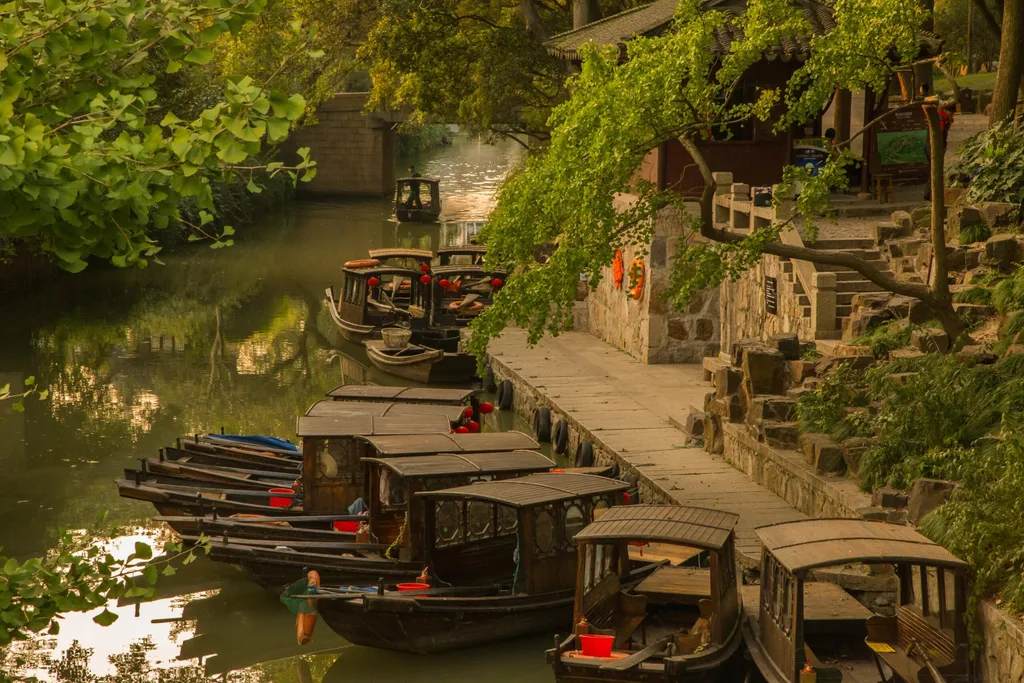Home to 24 million people, Shanghai is the dynamo of Chinese entrepreneurial capitalism. The relentlessly bustling metropolis scarcely stops to draw breath. If you’re on anything more than a short visit, time out becomes a priority.
Shanghai dishes up some surprises should you hit the “eject” button. On the city’s western outskirts, the serene gardens of Suzhou are balm for the soul. Venture further and you can be among bamboo forests or admiring mountain tops rearing through a sea of clouds. Here are three great options.
Moganshan
Drive for two and a half hours south east of Shanghai and you’re in the rippling hills around Mount Morgan. This forested mountain enclave is a welcome breath of fresh air, and is now making the most of its intriguing pedigree.
Moganshan was first carved out in the late 1800s by foreign missionaries looking for an escape from Shanghai’s sticky summer heat. Foreign merchants followed in their wake, building stone manor houses kitted out with tennis courts, swimming pools and rose gardens.
In the 1930s the region became popular with the city’s beau monde and a handful of the Shanghai Mafiosi who ran the city’s opium dens. One reportedly fed a mistress to the tigers that he kept in his villa compound. You can hike or bike through shady bamboo forests on the mountain trails, make excursions to historic homes, stop for afternoon tea at Moganshan Lodge and just enjoy the cool air.
A handful of mountain retreats have been created here by savvy expats. The dishy Le Passage Mohkan Shan sits in a tea plantation and has a style and décor straight from the 120s. Another hot contender is Naked Stables, a brace stab at an eco resort created by South African Grant Horsfield and his architect wife, Delphine Yip.
Moganshan comes into its own from April to mid-October, but weekends in July and August are best avoided, as this is when the summer heat drives the masses to the mountains.

The Suzhou water canals
Suzhou
Called “the Venice of the East” by that legendary explorer Marco Polo, Suzhou is a city of canals – and it’s just 30 minutes on a train from Shangai. It was made rich by its strategic position on the Grand Canal, but now it’s practically a suburb of sprawling Shanghai.
With all that wealth and water, Suzhou evolved into a city of gardens. Created between the 11th and 19th centuries, mostly by scholars seeking an idealised retreat from the world, it was these gardens with their strategically placed rocks, hillocks and waterscapes that laid down the template for the Chinese garden. Threes are shaped and sculpted as no tree is ever crafted by nature.
There are 19 gardens open for public viewing in Suzhou. One of the best known is the Humble Administrators Garden, a masterpiece of Chinse garden design.
A circular moon door frames a pine tree, symbol of longevity. The Hall of Distant Fragrance is placed to catch the scent of lotus blossoms when the flower in the pond at its feet. There are pavilions and pagodas where one might sit and dash off a poem, practise calligraphy or play a flute. Ponds and streams – rippling, cascading and reflecting – are an essential element and provide the garden’s architects with opportunities to demonstrate their skills in building humpback bridges.
While it’s perfectly feasible to take in the gardens on a daytrip from Shanghai – the G and D trains from Shanghai’s Hongqiao Station take just 30 minutes – there are good reasons to stay longer.
Pingjiang Lodge is a 450-year-old complex of rooms and courtyards, once the property of a rich mercantile family, which offers accommodation with character to bum.
At the other end of the style rainbow, Tonino Lamborghini Boutique Hotel Suzhou is owned by another cashed-up family, that of the Italian car-maker. Expect razzle-dazzle interiors and elegant fusions of Sino-Italian design.

Jiangxi Province
Huangshan
Sacred ground to the Chinese, these dramatically leaping granite-peaks and pine-covered ridges have provided the country’s ink painters with some of their favourite icons.
The Huanshan Scenic Area, 500km (or a four-hour train ride) south-west of Shanghai, is a UNESCO World Heritage zone with 36 separate peaks rising above 1800 metres.
Mist rising from the valley below often causes the mountain tops to appear disembodied and floating on a doona of clouds.
Romantic names – Brilliant Top Mountain, Lotus Peak, Celestial Capital – hint at the feelings they evoke. Mount Huangshan, or Yellow Mountain, is one of the most familiar summits in Chinese art. It’s also known as No. 1 Mountain under Heaven. Visitors can toil up the Hundred-step Cloud Ladder, a trail of steep stairs carved into the rock, to take in the views, but be warned – it’s tough on the calf muscles.
The region is enormously popular with domestic tourists, yet only a few venture far beyond the cable-car stations, and Huangshan saves its real treasures for those who are prepared to walk.
Your best bet for a half-day hike is to take the Eastern Steps from the Yungu Cableway car park up to White Goose Ridge and on to the mist-filled cauldron of the valley of Beihai. Be prepared for a long day’s walk if you tacked the Peak Circuit and descent via the longer Western Stairs.
The best way to get to Huangshan is the new bullet train from Hongqiao Station, which slashes the travel time to just over four hours. Plan a two-night stay at the best least to experience the changing majesty of the scenery. The brand new Banyan Tree Huangshan, set among trees on the lower slopes, delivers all the good things in life, including spa treatments and massages for weary legs.
This story appeared in In The Black.



